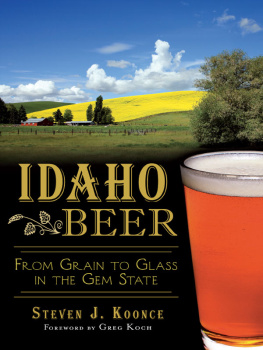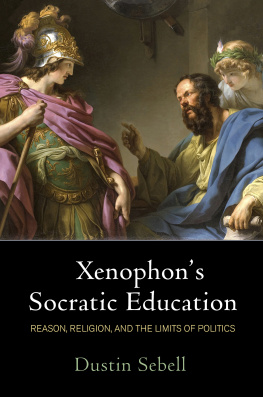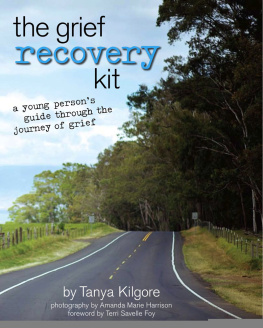Idaho's Place
A NEW HISTORY OF THE GEM STATE
EDITED BY
Adam M. Sowards
UNIVERSITY OF WASHINGTON PRESS
SEATTLE AND LONDON
PROGRAM IN PACIFIC NORTHWEST STUDIES
UNIVERSITY OF IDAHO
2014 by the University of Washington Press
Printed and bound in the United States of America
Design by Dustin Kilgore
Composed in Chaparral, a typeface designed by Carol Twombly
17 16 15 14 5 4 3 2 1
All rights reserved. No part of this publication may be reproduced or transmitted in any form or by any means, electronic or mechanical, including photocopy, recording, or any information storage or retrieval system, without permission in writing from the publisher.
University of Washington Press
PO Box 50096, Seattle, WA 98145, USA
www.washington.edu/uwpress
Program in Pacific Northwest Studies
Department of History
University of Idaho
875 Perimeter Drive MS 3175
Moscow, ID 83844-3175
Rabbit and Jack Rabbit reprinted by permission from Rodney Frey, Landscape Traveled by Coyote and Crane: The World of the Sch i tsuumsh (Coeur dAlene Indians) (Seattle: University of Washington Press, 2001), 112.
Library of Congress Cataloging-in-Publication Data
Idaho's place : a new history of the Gem State / edited by Adam M. Sowards. 1st edition.
pages cm
Includes bibliographical references and index.
ISBN 978-0-295-99367-6 (cloth : alk. paper)
1. IdahoHistory. 2. IdahoCivilization. 3. EthnologyIdaho. 4. IdahoEthnic relations. I. Sowards, Adam M., editor of compilation. II. University of Idaho. Program in Pacific Northwest Studies.
F746.I24 2014
979.6dc23
2013041645
The paper used in this publication is acid-free and meets the minimum requirements of American National Standard for Information SciencesPermanence of Paper for Printed Library Materials, ANSI Z39.481984.
e-ISBN 978-0-295-80507-8
To all my teachers and students
in western and northwestern history
Acknowledgments
Among the many who have helped create this book, those who work at the Idaho State Historical Society deserve prominent thanks. Oral historians, past and present, preserved important materials that I drew on. Kathy Hodges made a research trip to Boise pleasant and productive. On that same trip, I drew on Judy Austin's generosity and detailed knowledge of the society's photographic holdings, making my task far easier. I also am exceedingly grateful to the Idaho Humanities Council for a grant to help offset the funding for this book; Rick Ardinger graciously helped facilitate that process. Further funding and support came through the University of Idaho's Program in Pacific Northwest Studies. Katherine G. Aiken, the former dean of the College of Letters, Arts, and Social Sciences and current provost for the university, ensured funding for the program, even in times of financial challenges, and has been a supporter of this project from its inception. Elizabeth Carney, Mark Fiege, Troy Reeves, Jeff Sanders, and Kelley Sowards gave the introduction helpful critiques that have helped me improve my ideas and expression. Aaron Schab and Shane Garner provided editorial assistance. Marianne Keddington-Lang of the University of Washington Press gave this project early support and excellent suggestions. Ranjit Arab inherited the project when Marianne semiretired; he has been the perfect combination in an editor, prodding and persistent, encouraging and helpful. The rest of the press staff have been models of professionalism. Most of all, I thank the authors of these essays for their fine work, their infinite patience, and their (usually) good cheer in the face of what has seemed to us all to be endless delays. I can only hope that the book meets their expectations. Lastly, as with all projects, I thank my familynear and far, old and newfor their forbearance and support. The book is dedicated to all my teachers and students in western and northwestern history; from them, I have learned and continue to learn so much.
1
Idaho's Place
Reckoning with History
ADAM M. SOWARDS
SNOW AND RAIN FALL FROM THE IDAHO SKIES. AS WATER, IT rolls or seeps down hillsides and into creeks. It collects into larger streams and then into rivers. Then rivers converge into larger rivers. It is an impressively complex system in which several parts exist individually, but as they move through space and time, those independent pieces gather together and collect into something larger and then larger still. At the headwaters, the water system seems simple. By the time we see the river downstream, it is the accumulation of countless tributaries and all that flows into each of them.
History is like that, too. It begins with small thingsan individual, a family, a village, a year. They interact and accumulate and converge, adding and changing into something altogether newa town, a region, an economy, an era. Later, downstream, as it were, those constituent parts are so intermingled, so entangled, that it is impossible to discern one strand from another, and we find each piece wrapped up with all the others. So it is with Idaho and its rich past. The waterways of history are abundant. This book helps us chart them. It shows us how the streams and rivers have createdand continue to createthis vibrant place, Idaho.
What is Idaho's place? It is a deceptively simple question. The answer, of course, is, it depends. It depends partially on how we frame the question. If we consider it geographically, Idaho is a meeting ground of the Great Basin, Rocky Mountains, and Columbia Plateau and is characterized by stunning sagebrush, majestic mountains, and roiling rivers. If we examine it politically, Idaho is as conservatively Republican as any state today, but beginning in 1971, two Democratic governors served six consecutive terms, and the state has long been represented by fiercely independent Republicans and Democrats unafraid of bucking their party establishments and serving the state more than a party's ideology. If we conceive of it ethnically, Idaho is one of the most homogeneous states in the nation, yet once nearly one-third of its population was Chinese, a long and proud Basque tradition strongly influences cultural events and identities, and its many tribal members represent a continuing vital presence.
This list of paradoxes could go on. The contradictions could be described by the common quip that Idaho is the only state with three capitalsSalt Lake City, Boise, and Spokanewhich shows the cultural, political, and economic scattering of the state. They could highlight how the state possesses some of the largest and longest-protected wilderness areas amid a population that exhibits some of the nation's most hostile attitudes toward environmental protection. They could feature the simultaneous opportunities and obstacles, discrimination and tolerance faced by diverse Idahoans while they were trying to make a successful life in the state. In other words, the state is a diverse and in-between place where there is far more than first meets the eye or than is revealed by the popular stereotypes of famous potatoes, Aryan Nations, and open spaces. To place Idaho, to define this state, we must reckon first and last with its history. This book takes on this task.









